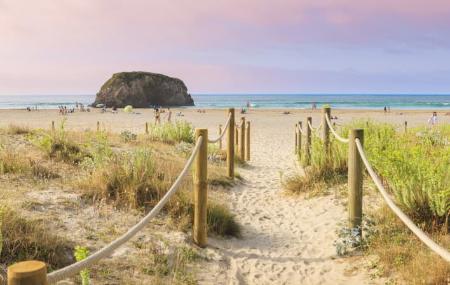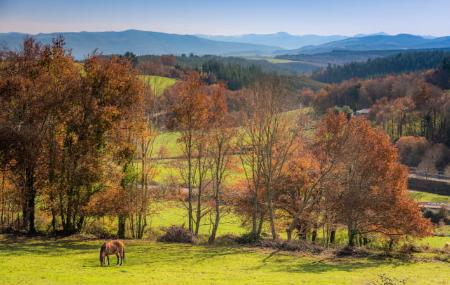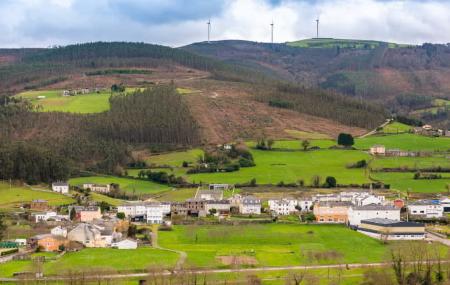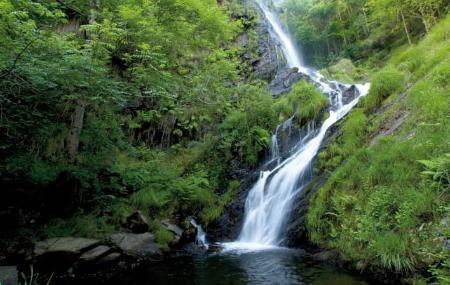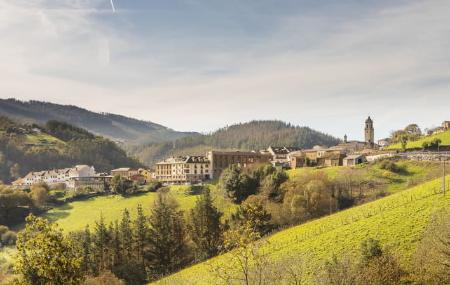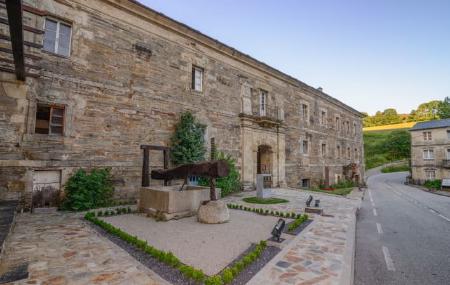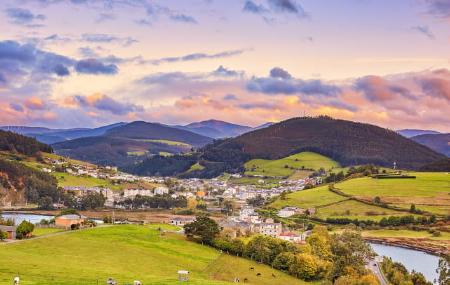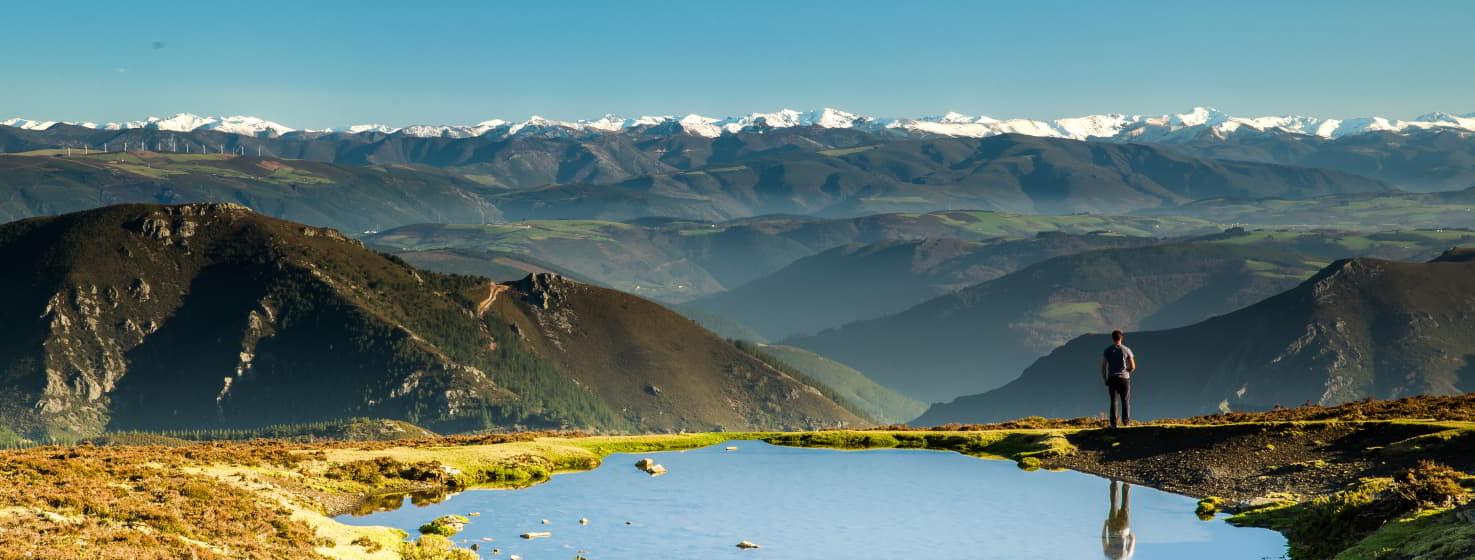
Oscos-Eo
Oscos-Eo is home to the only Biosphere Reserve in Asturias that faces the sea. The largest estuary in Asturias, forested mountains, crystalline rivers and hidden waterfalls all come together at this western end of the region. All of this coexists with seaside towns with an illustrious air, such as Castropol or Figueras, which are reflected in the Eo estuary and look out over the Bay of Biscay. In Vegadeo, on the threshold of the estuary, begins an inland territory of riverside and livestock farming customs. Further inland, in the Oscos, the villages seem to have stopped in a time of forges and hydraulic mills, with the constant murmur of the water and the sound of the beating of fulling mills and anvils. Taramundi, with its landscape of hills and forests shaped by water, preserves a way of life where craftsmanship is a way of life.

Natural and cultural heritage of Oscos-Eo
The border condition of this land gives rise to a plural and profound identity in which heritage and landscape are not separate worlds, but pieces of the same puzzle.
The Eo estuary
The Eo estuary is an extensive mouth that opens up between Asturias and Galicia. It is the largest estuary in Asturias, 16 km long and 14 km² in area, where the mixture of fresh and salt water creates fertile and diverse habitats. At low tide, the mud is buzzing with micro-organisms and molluscs; a feast for thousands of migratory birds that make a winter stopover here. At full tide, otters, bottlenose dolphins or porpoises, and migratory fish such as lamprey, shad, salmon and eels can also be seen. It is no coincidence, therefore, that this wetland is protected by the main ecological protection figures, nor that since 2007 it has been included in the Río Eo, Oscos and Terras de Burón Biosphere Reserve.
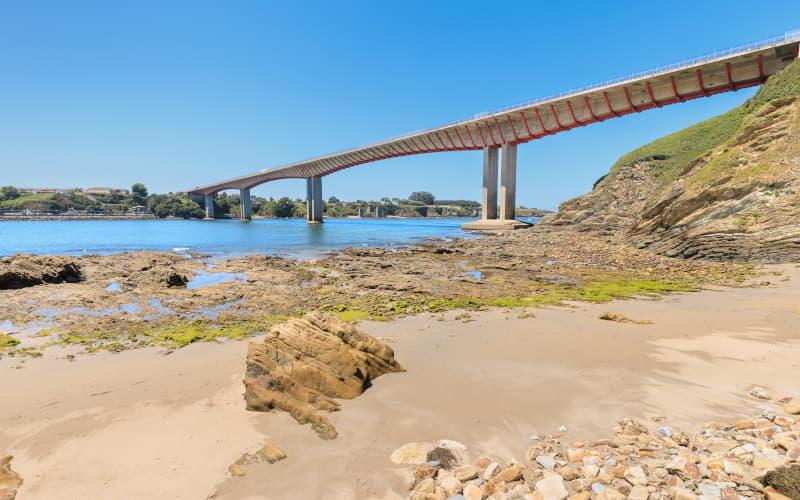
The tides shape the shores and inlets, and also mark the rhythm of the trades of the sea: the shellfishing of clams, cockles or razor clams; the traditional fishing of sea bass, bream or red mullet, and the cultivation of oysters in rafts and intertidal parks. The Eo is, without a doubt, the backbone of human life in a large part of the region. Its course, almost 100 km long, runs for the most part through Lugo and enters Asturias through San Tirso de Abres, a council rich in trout and salmon, in gallery forests and fertile meadows. Downstream, at the tail end of the estuary, is Vegadeo, a land of abundant commercial and livestock activity that is favoured by its riverside location. Castropol, for its part, stands stately on the northern part of the estuary, with its cobbled streets and an air of nobility that does not renounce its seafaring tradition or its nautical interests. It was once home to riverside shipyards, such as those in the Linera inlet, then criss-crossed by barges, pataches and pinazas. Further north in the council, bordering the Cantabrian Sea, is Figueras, a fishing village with a long tradition of boat building. The Gondán shipyards have more than a century of history and have launched more than 500 ships bound for ports all over the world. Figueras is joined to Ribadeo by the bridge of Los Santos ( 600 m.). Both towns had their naval splendour between the 15th and 18th centuries, when the wood and ironwork of the Oscos supplied the markets of half of Spain and overseas.
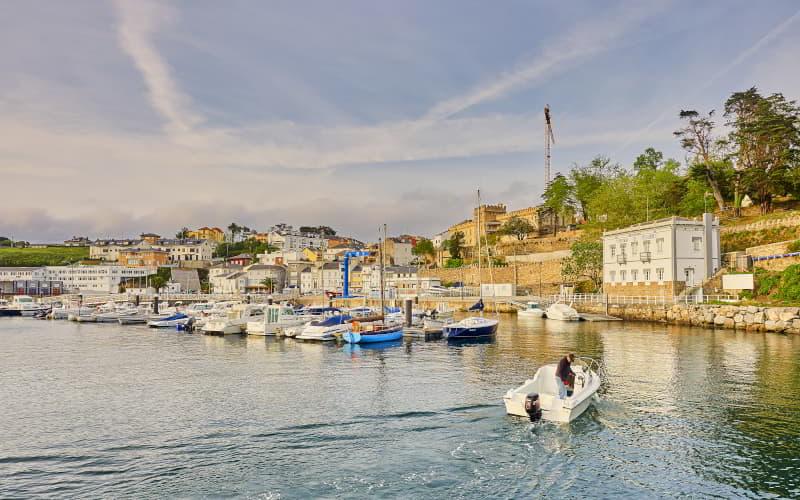
Los Oscos and Taramundi: wood, iron and handicrafts
The Oscos - Santa Eulalia, San Martín and Villanueva - form a triangle of common identity where nature unfolds in fullness: roe deer, wild boar, foxes and birds of a thousand kinds brighten up the forests. While holm oak, holly and holly trees weave a tapestry of vegetation that justifies its inclusion in the world network of Biosphere Reserves. The villages, with their century-old hórreos (raised granaries) and the slate roofs so characteristic of the area, dot a landscape of valleys and mountain ranges such as La Bobia, whose torrents feed the crystal-clear rivers of the surrounding area. A couple of centuries ago, these waters, together with the wood from the forests, powered the hydraulic hammers of the forges. In Santa Eulalia, the Mazonovo Ethnographic Ensemble preserves an 18th century mallet that still beats iron. The iron-worker works in full view of the visitor and, if we dare, we can forge our own nails. In the council of Villanueva, the old ironworks of Santa Eufemia has been reborn as a workshop that combines forging and macramé, with handcrafted pieces, visits and workshops.
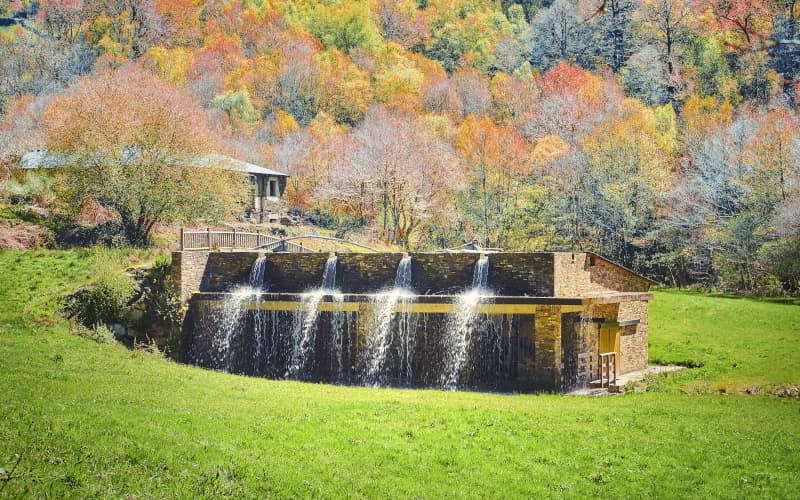
As in the Oscos, Taramundi is full of stone houses and iron has also marked its history. The area's iron resources have been exploited since ancient times, as can be seen in the remains found in the Os Castros hillfort and in the nearby Roman forge of A Veiga de Escouredo. In the 18th century, the virtuous triangle of iron, water and forest boosted a whole rural industry with mallets and forges at every turn. Although the ferreiros made all kinds of tools, they specialised in blades and knives in the more than one hundred workshops that came to be counted in the municipality. Today, cutlery continues to be the hallmark of the council, and the Museum of Cutlery preserves this tradition with pieces and stories of seven generations of Navalleiros. Since 2005, the municipality has been an Area of Artisan Interest, placing even more value on its famous narrow-bladed knives with boxwood or heather handles, with their classic geometric designs. Also in 2005, the Ethnographic Ensemble of Os Teixóis, one of the cardinal points of the Asturian rural world, was declared an Asset of Cultural Interest. Here we can experience first-hand how our ancestors used to tame the streams to forge iron, grind grain, weave cloth or sharpen tools. More than an ethnographic site, it is a time machine.

Routes and outdoor activities
The traveller who arrives in Oscos-Eo soon discovers that this land can be enjoyed without haste. Hiking is guaranteed, as is cycle touring on secondary roads or mountain biking on forest tracks. There is no shortage of water activities in the estuary: bathing and surfing, or canoeing.
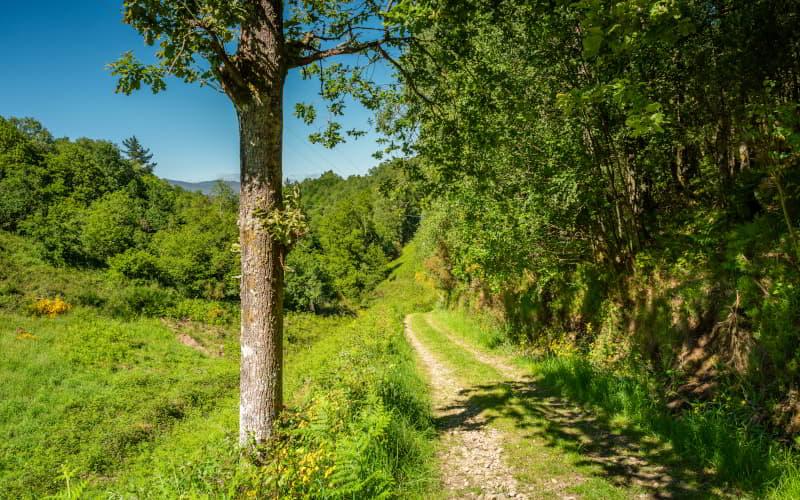
The Eo Coast
The Castropol-Figueras coastal path offers views of the estuary, remains of riverside carpentry and old tidal mills such as das Acías. The surroundings of the town of Figueras hide beaches such as San Román, a cove that can only be reached at low tide, or Arnao, a sandy area with calm waters for bathing. From here, the coastal path takes us to Tapia de Casariego in just over 10 kilometres. On the way, there is Penarronda beach, declared a Natural Monument. It is one of the most beautiful beaches in western Asturias, with protected dunes and a large number of surfers.
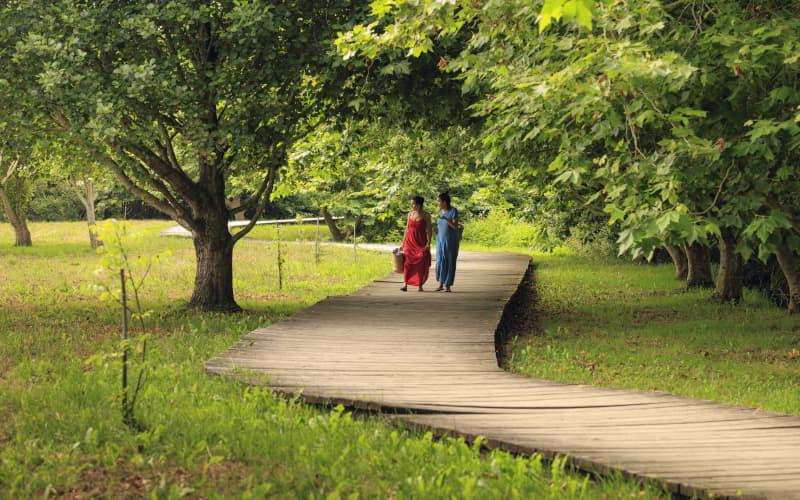
While the waves come and go, so do the pilgrims. Here the Camino de la Costa lives its last Asturian stage. From Tol you can continue to Figueras and cross the Bridge of the Saints, or turn off to Castropol to take the passenger boat in summer. There is also a third option, the historic route via Vegadeo, which in the past avoided the danger of the estuary and entered Galicia via the Fornacho bridge. Although it fell into disuse after the opening of the Bridge of the Saints in 1987, today it once again attracts those in search of nature and rural landscapes.
Nature trails
The network of footpaths in the region is wide and varied, allowing each visitor to choose their own adventure. In Vegadeo, the path of the Twelve Bridges runs along footbridges next to the rivers Monjardín and Suaró, while the path of the Eo estuary offers viewpoints over the estuary and a recreational area perfect for resting and bird watching. In these same surroundings, the Estraperlo route runs along the river between jetties, the 17th century Pividal Palace and the ruins of an old inn in Sela de Murias - once a resting place for pilgrims and muleteers.
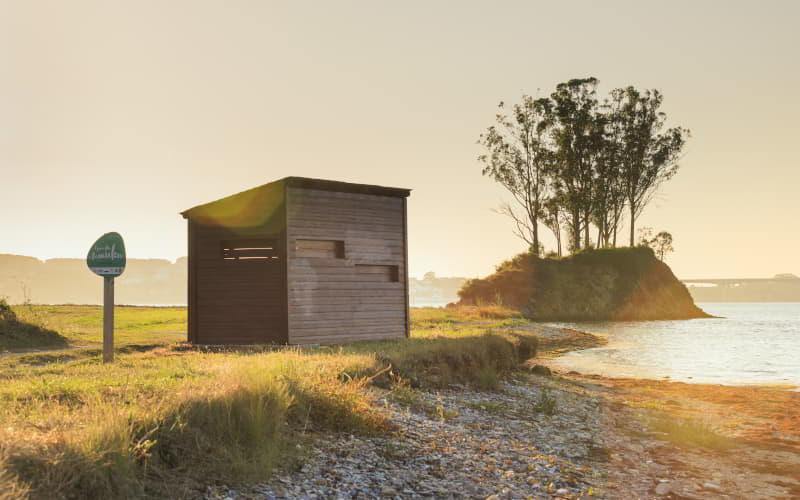
For those in search of waterfalls, there is no lack of spectacle here: the Morlongo waterfall in Villanueva, the A Seimeira route in Santa Eulalia - with an uninhabited village, a mysterious forest and a 30-metre waterfall -, or the Cioyo waterfall in Castropol, an almost mythological spot perfect for a family outing.
The industrial past also has its path: the Railway route in San Tirso de Abres, with tunnels dug into the rock and walkways that follow the tracks of an old mining train: 13 km (round trip), easy for families and bicycles. For lovers of the countryside: the Mon route, circular and about 15 km long, starts from Revoqueira, near San Martín, and reaches the village of Mon and its 18th century palace. Another long circular walk is the Water Route, in Taramundi. It runs through the ethnographic heart of the region, starting from the Mazonovo Mills Museum and passing Os Teixóis and the Ethnographic Museum of Esquíos. The path reminds us at every step that water was the great driving force of the rural world. The more experienced hikers can opt for the evocative Silence Route, which starts in San Cristóbal (Villanueva), goes through abandoned villages, thick forests and reaches two giant waterfalls: Celón (50 m) and Picón (60 m).
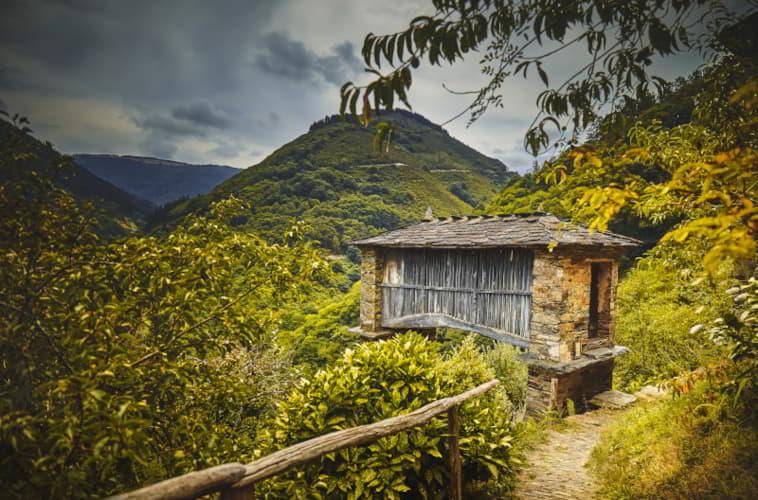
And for those who prefer to cycle, cycle touring in Oscos-Eo is an invitation to discover dream landscapes and rural heritage in abundance. From demanding routes such as the return to Oscos or the ascent to Bousoño, to family options such as the Eo greenway. There are alternatives for everyone, you can discover them in this link.
Tips to enjoy Oscos-Eo
Getting to the region is easy: from Oviedo/Uviéu or Gijón/Xixón, just take the Cantabrian motorway and turn off towards Vegadeo. We are already in the epicentre of a territory of quiet life, where each season has its own magic: spring and autumn burst with life in the forests and waterfalls; summer invites to coastal routes, bathing in river pools and nautical tourism; winter, between fogs, lends itself to meditation in front of a good fireplace. The world seems to stop and "la fala" (officially, Eo-Naviego) resounds more clearly, the speech of everyday conversations and toponymy: Castripol, Siares, As Figueiras or Santalla d'Ozcos.
A Veiga/Vegadeo is the commercial centre of the region with a modern fairground, an imposing 19th century town hall, a modernist kiosk and the multicoloured sculptures of the cow Silvallana and her "xatín". In the public library we can admire a replica of the Nicer Stele, a key piece of Asturian archaeology.
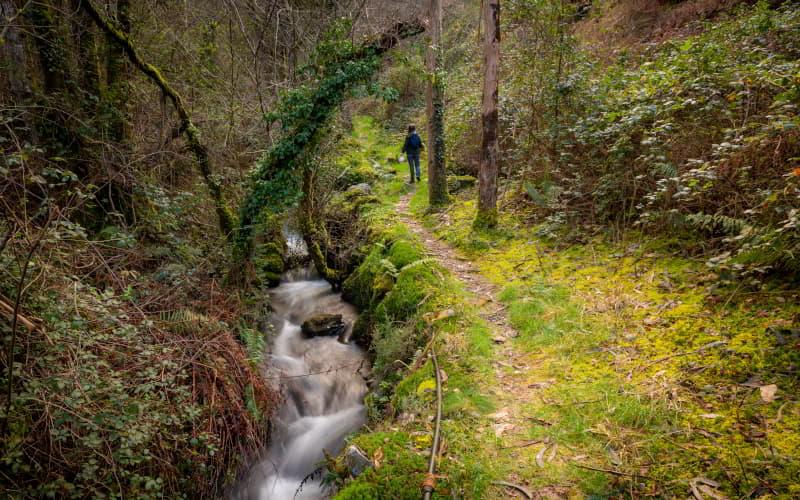
The three councils of Los Oscos were named Exemplary Towns(opens in a new tab) in 2016, and there are plenty of reasons for this: in San Martín, the Mon Palace and the Guzmán mansion evoke illustrious lineages that marked the future of the region; for its part, the Casa del Marco is an ethnographic museum that preserves the essence of rural life. In Vilanova, the monastery of Santa María, founded in the 12th century, is the venue for the living Stations of the Cross, declared a Festival of Tourist Interest of the Principality of Asturias. It also hosts the Festa dos Frailes, at the beginning of August: a collective event that combines music, art and heritage. In Santa Eufemia, the Bread Ecomuseum takes visitors on a journey through the cycle of this essential foodstuff, from sowing to the wood-fired oven. In the municipality of Santa Eulalia, more specifically in Ferreirela de Baxo, a visit to the birthplace of the Marquis of Sargadelos, an illustrious man who founded one of the first earthenware and cast iron factories in Spain, is a must. In this same setting, there is nothing like the river beach of Ferreira: a natural pool in a large backwater of the river Agüeira, perfect for a dip, canoeing or just relaxing in the shade of the alders.
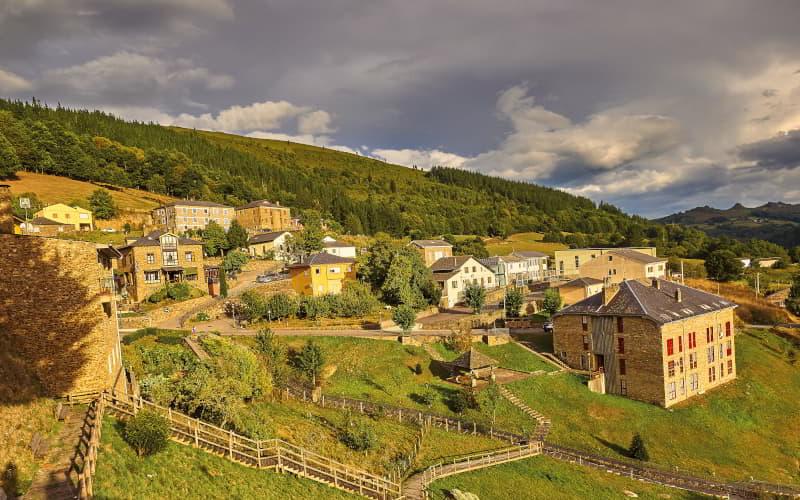
San Tirso de Abres, the smallest council in Asturias (Exemplary Town in 2011), opens onto the Eo with river walks, recreational areas and corners such as Xesteira, an area frequented by trout and salmon fishermen, with stretches of the river suitable for kayaking. In El Llano, capital of the council, the church of San Salvador and the chapel of San Juan coexist with mansions and a large recreational area in the middle of nature, sheltered by alders and riverside trees.
The village of Taramundi is a picturesque mid-mountain town with corners such as the Plaza del Poyo square, the church of San Martín (18th century), with its Baroque and Neoclassical tower and altarpieces, and the Plaza Manuel Lombardero square. At the top of the village is the Casa Rectoral, which in 1986 became the first rural hotel in Spain. There are many things to do in Taramundi, check this link.
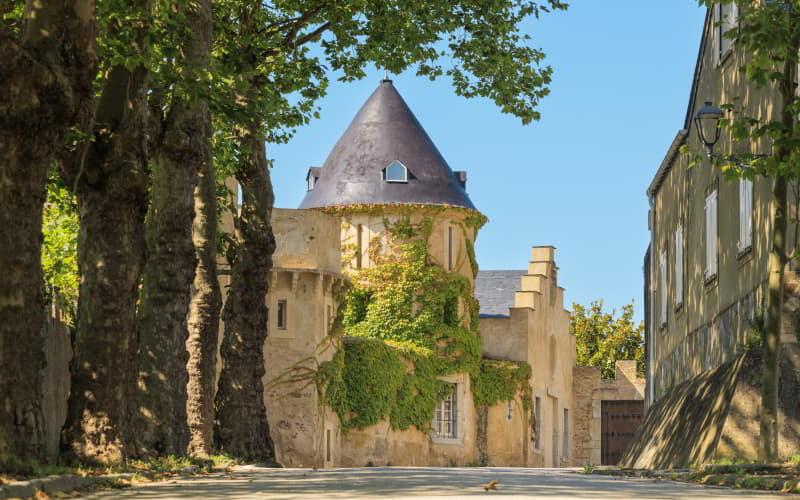
On the coast, Castropol (Exemplary Town 1997 and an Asset of Cultural Interest since 2004) stands on a hill that seems to sail in the estuary, with its nineteenth-century might of palaces, mansions, gardens and viewpoints. It was a galley shipyard for the Invincible Armada and the home of Fernando Villaamil, inventor of the destroyer (warship). Every Corpus Christi, the streets of its historic quarter are covered with its famous floral carpets (a Festival of Tourist Interest in the Principality of Asturias).
The town of Figueras shares with Castropol its love of Olympic rowing, rowing boats and lateen sails. It also displays its seafaring soul around a port where fishing and shipyards coexist. The town's charm is completed by its Clock Tower and the elegance of the Peñalba Palace, a modernist emblem of the town designed by a disciple of Gaudí.
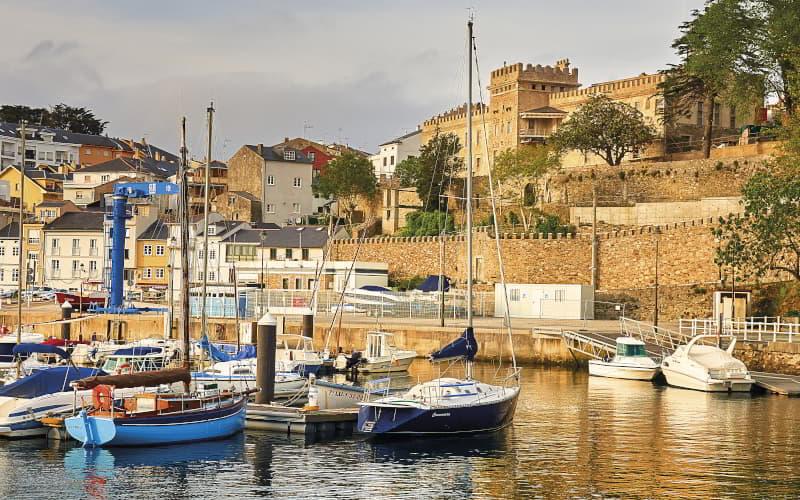
Today this mansion is an exclusive accommodation, although the rural houses and flats of stone and slate in the region are not far behind, with good wood-burning fireplaces and in full harmony with the landscape. Here we are committed to quality, sustainability... and a luxury table that is nourished by this unparalleled wine cellar: beans, broth of turnip tops, formigos (breadcrumbs), botelos, chorizos and roxois (cracklings); trout, salmon, sea bass or bream from Eo, cereixolos (carnival-style frixuelos), cottage cheese and cheeses from Taramundi and Oscos.
We do not forget the oysters from Castropol, nor its popular gastronomic festival "Somos la ostra(opens in a new tab)", celebrated during the long weekend in May. And we take this opportunity to insist on the idea that the Oscos-EO region is like this mollusc. We can savour it in a single mouthful, instantly enjoying all its freshness and nuances, or rest it in our memory as a shining pearl of remembrance.
Images
Map
What to see
- The 10 best things to see and do in the Oscos Eo region.
- The fishing villages of Castropol and As Figueras.
- A Seimeira and Mazonovo Ethnographic Ensemble in Santa Eulalia de Oscos.
- Monastery and Ecomuseum of Bread in Villanueva de Oscos.
- Palace of Mon in San Martín de Oscos.
- Mazo de Meredo in Vegadeo.
- Ethnographic Ensemble of Os Teixóis and Museum of Cutlery and Weaving in Taramundi.
- Villages on the Pilgrim's Way to Santiago de Compostela and the Eo Path in San Tirso de Abres.


